From fashion design to ecommerce management
From fashion design to ecommerce management
My relationship with the fashion world is over 20 years old and it is still one of my favorite industries to participate in a project.
Like almost everyone else, I have always loved fashion. When I finished my stage as manager of Virgin Megastore stores in several cities, the truth is that I was a bit tired after very intense years in the music industry, so when I returned to my city, A Coruña (Spain) I thought that working at Inditex‘s headquarters in Arteixo, only 8 kilometers away, could be very interesting, so I sent my CV and several letters and was lucky enough to start working after two weeks.
The name Inditex doesn’t mean anything to many people but it is the biggest fashion retailer in the world, with brands like Zara, Zara Home, Bershka, Pull&Bear, Massimo Dutti,… and so on, up to 8 brands.
I started designing t-shirts for Pull&Bear. Then I moved to the Marketing Department of this brand and it is there where I designed the first website of the multinational: pullandbear.com, back in 1999, with the encouragement of the then head of the department, Pablo, to whom I owe his great support in this and other initiatives. The website was great, with 360º photos of the product, cool content, a lookbook, catalog … had very good reviews and I remember a report by Morgan Stanley in which only gap.com was a better fashion website because, of course, had e-commerce.
Pablo and I were two crazy people who sold the bonanzas of the Internet to everyone who put themselves out there, including Amancio Ortega, the founder of the multinational. At a meeting with the top management, we projected the website on a wall and this generated a lot of interest that led to the creation of an Internet Department for Inditex of which Pablo and I were the founding members and in which we began to design the websites of all the company’s brands, as well as the corporate website of Inditex. We also began to look for talent to form a great team and to talk to national and international agencies so that they could help us with everything we were about to do.
I took part in the meetings for Inditex’s IPO, and as it became clear that ecommerce was not in the immediate plans, I left the company in 2001 in search of new adventures in Barcelona.
I was involved in some new projects related to fashion and I wrote a 600 pages book about digital graphic design for fashion, which sold 10,000 copies.
In 2007, while directing my design studio in Barcelona, I received a new call from Inditex to participate in their ecommerce pilot project as director of zarahome.com. Zara Home is the group’s brand dedicated to clothing, tableware and accessories for home.
The preparation of the project was very hard and I worked closely with the development team, who did a spectacular job in laying the foundations of the platform that was going to serve all the brands once we tested the concept with the pilot website.
I managed a phenomenal team and it was a pleasure to work with all the departments I was in charge of, from photography, to catalog, sales, fraud, marketing, warehouse, customer service, etc. We showed that, although it was hard, it was possible to launch at the same time in 15 countries, 6 languages and 4 currencies and we managed to get the team to work in harmony and in a very positive way.
I probably rushed to leave Inditex again when we were about to celebrate our first anniversary since we open, but I saw the launch of zara.com as being far away, and that was the project that most interested me. Finally, the date was brought forward to 2010, two years ahead of schedule. I was lucky enough to participate in that launch, even if it was from my studio, helping to design the first ecommerce prototypes, developing the first mobile apps, designing several web content sections, UI/UX designing prototypes for new functionalities or testing new ways of filming video with models in their studio, among other things. Now I watch with envy how they process more than 1 million orders a day and I feel some nostalgia for that day in 1999 when we upload that 1st website on the server.
I never stopped doing things related to fashion, like giving a hand to the great team of Avestudio™, perhaps the best fashion web studio in the world, who wanted to improve their fashion video department and I want to believe that I contributed a little to make them so good now. I also designed and developed the website for Purificación García, a very complex and beautiful multinational project selling luxury accessories.
In 2015 I moved to NYC. From here I have designed a few new fashion retailing web projects, such as Apiece Apart (NY), Ouragami (Los Angeles), or Strawberries & Cream (London). My goal is to make my web designs convert. And I think I have the experience to do it.
The smallest fashion project I’m involved in is the t-shirt designs that I sometimes sell on Amazon, just for fun.
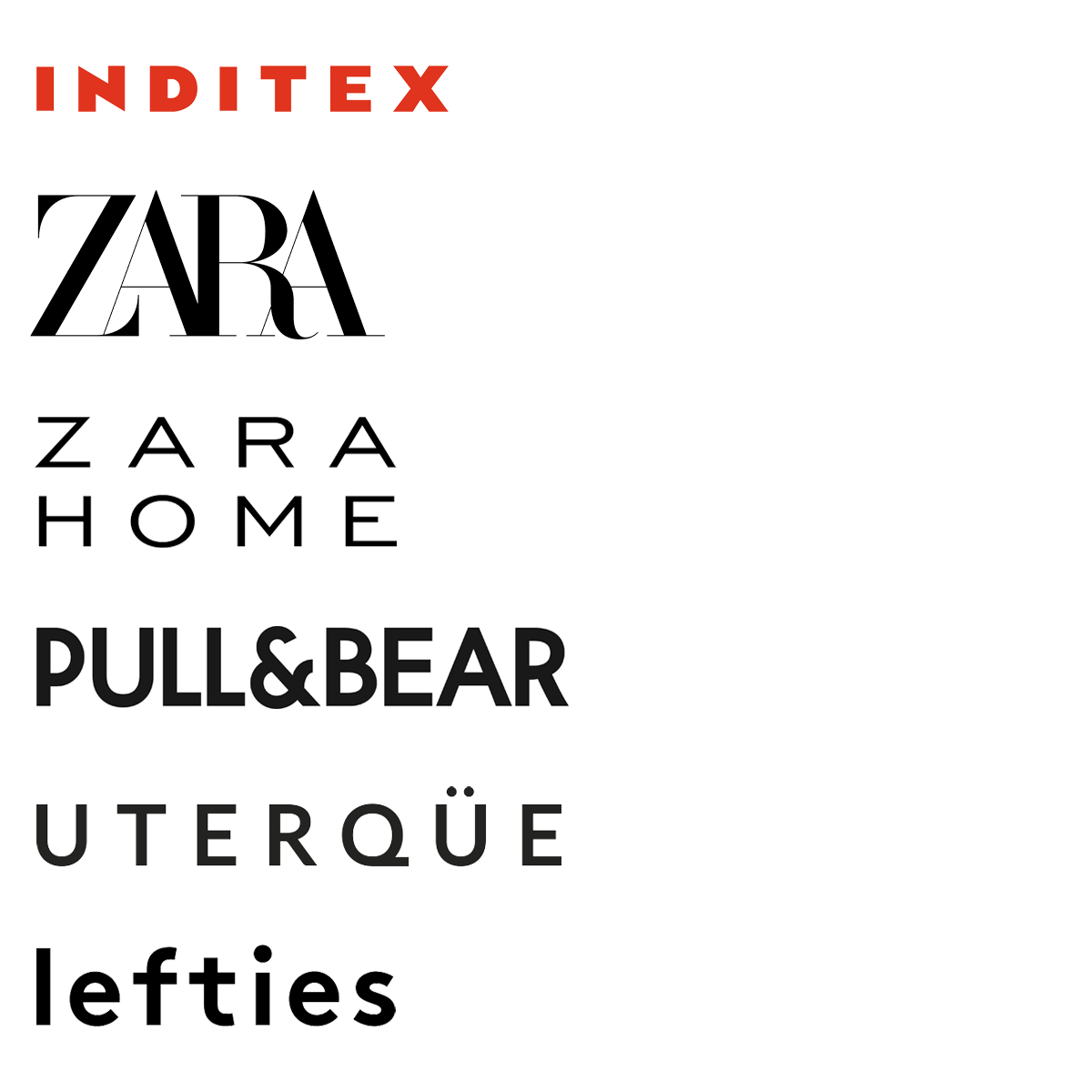
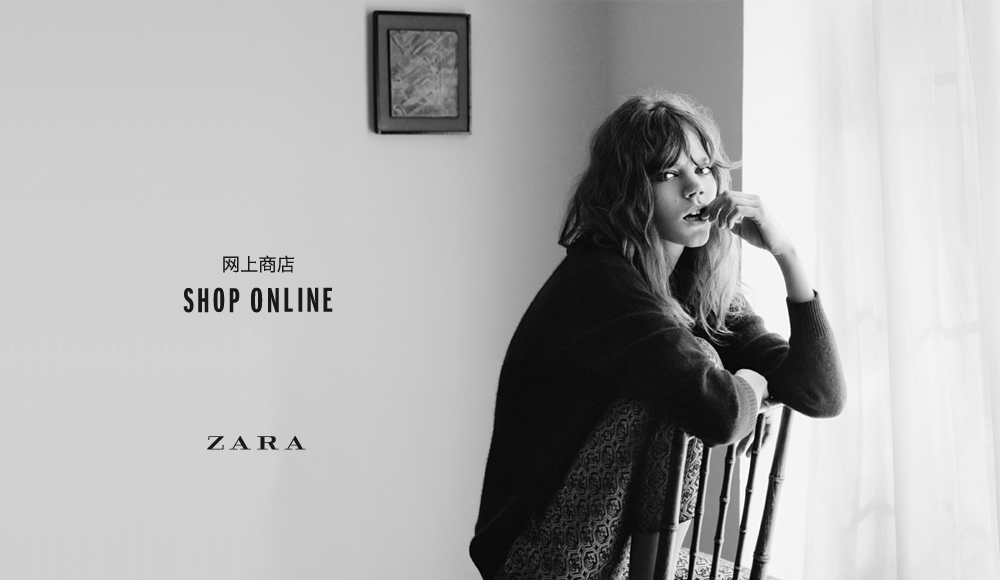
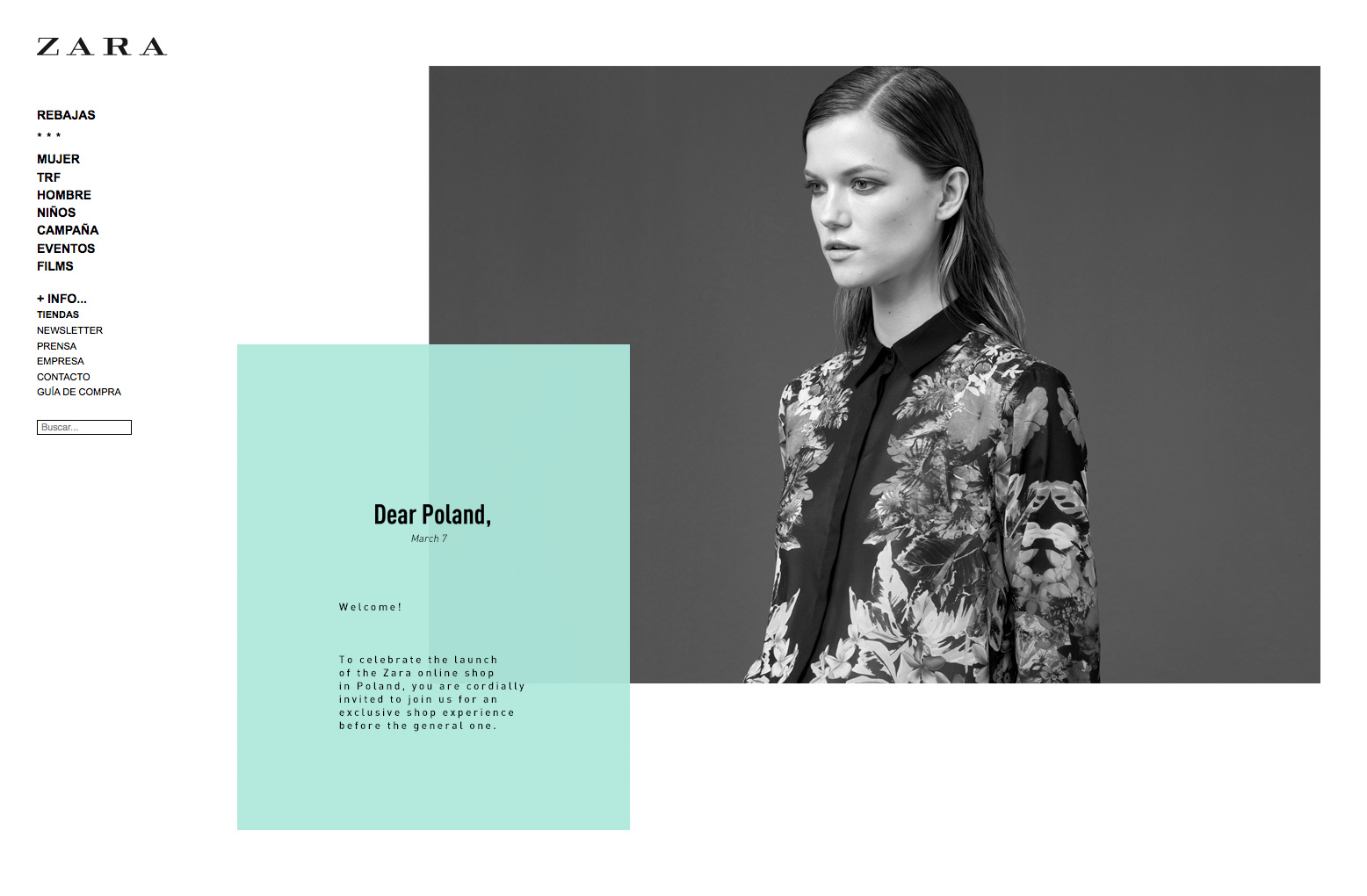
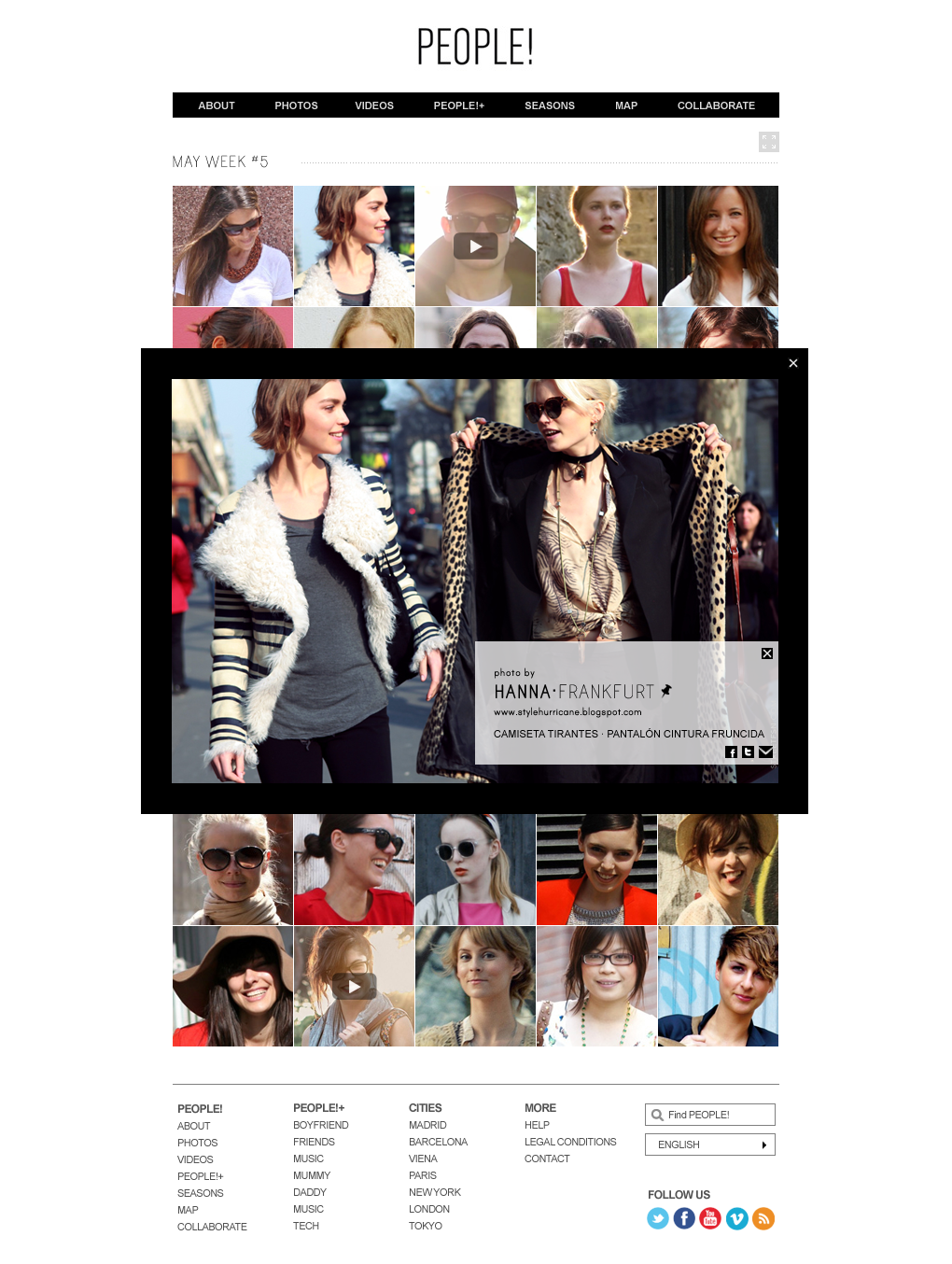
In 1998 I started working in Inditex. I was part of their team in two different periods of my career and also worked with them from my design studio.
In addition to projects for the parent company Inditex, I worked on projects for 5 of their brands: Zara, Zara Home, Pull&Bear, Uterqüe and Lefties. Among other projects, I did things like:

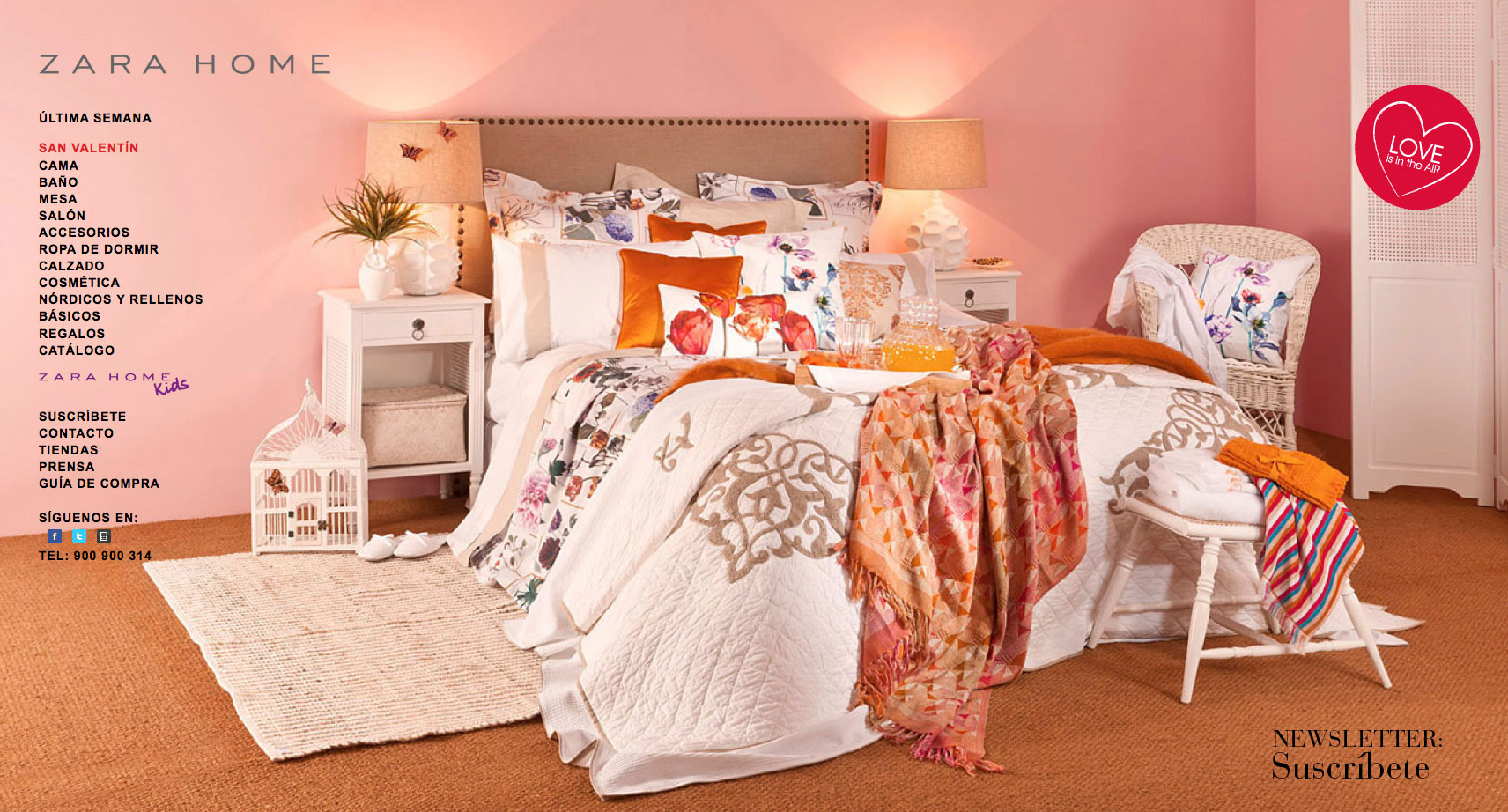
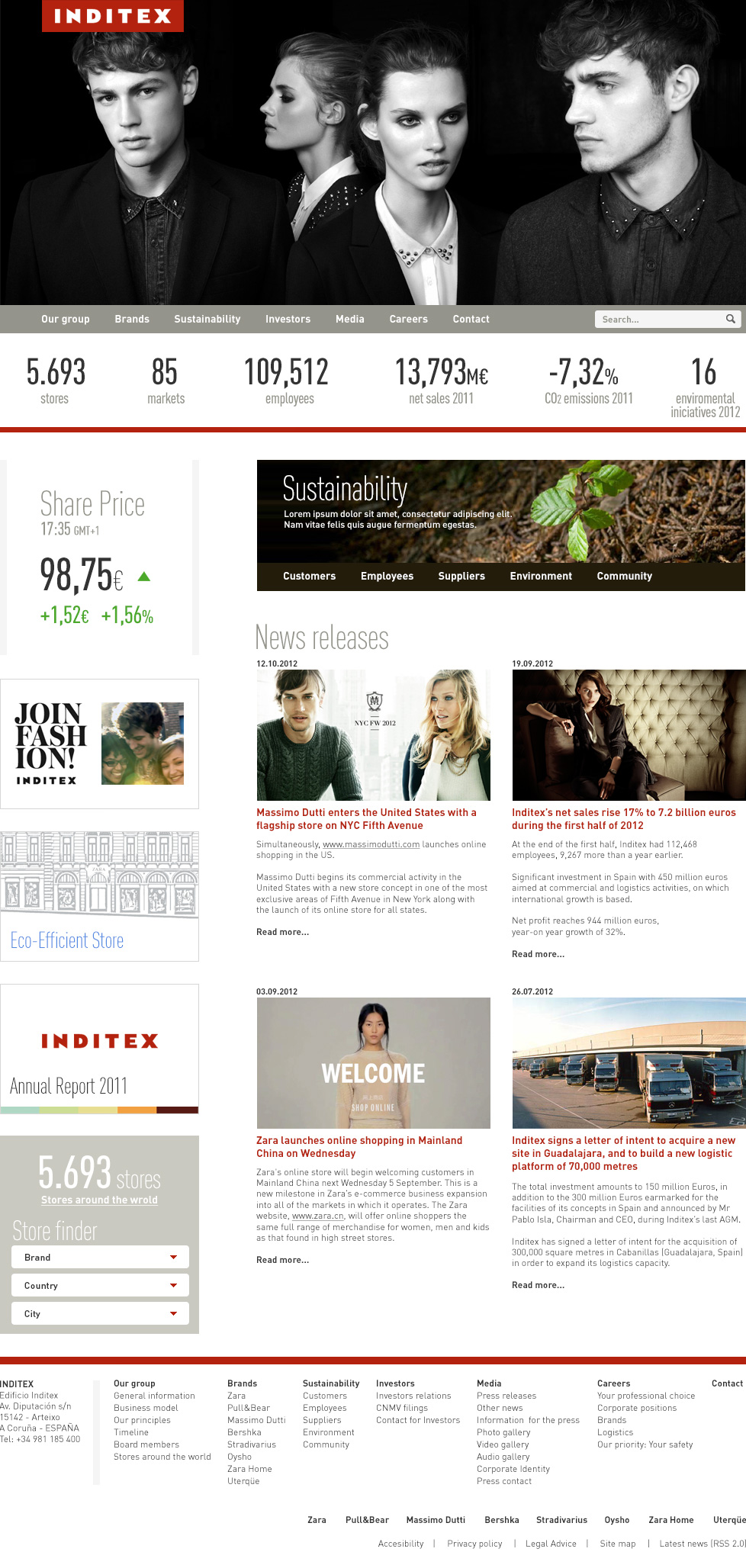
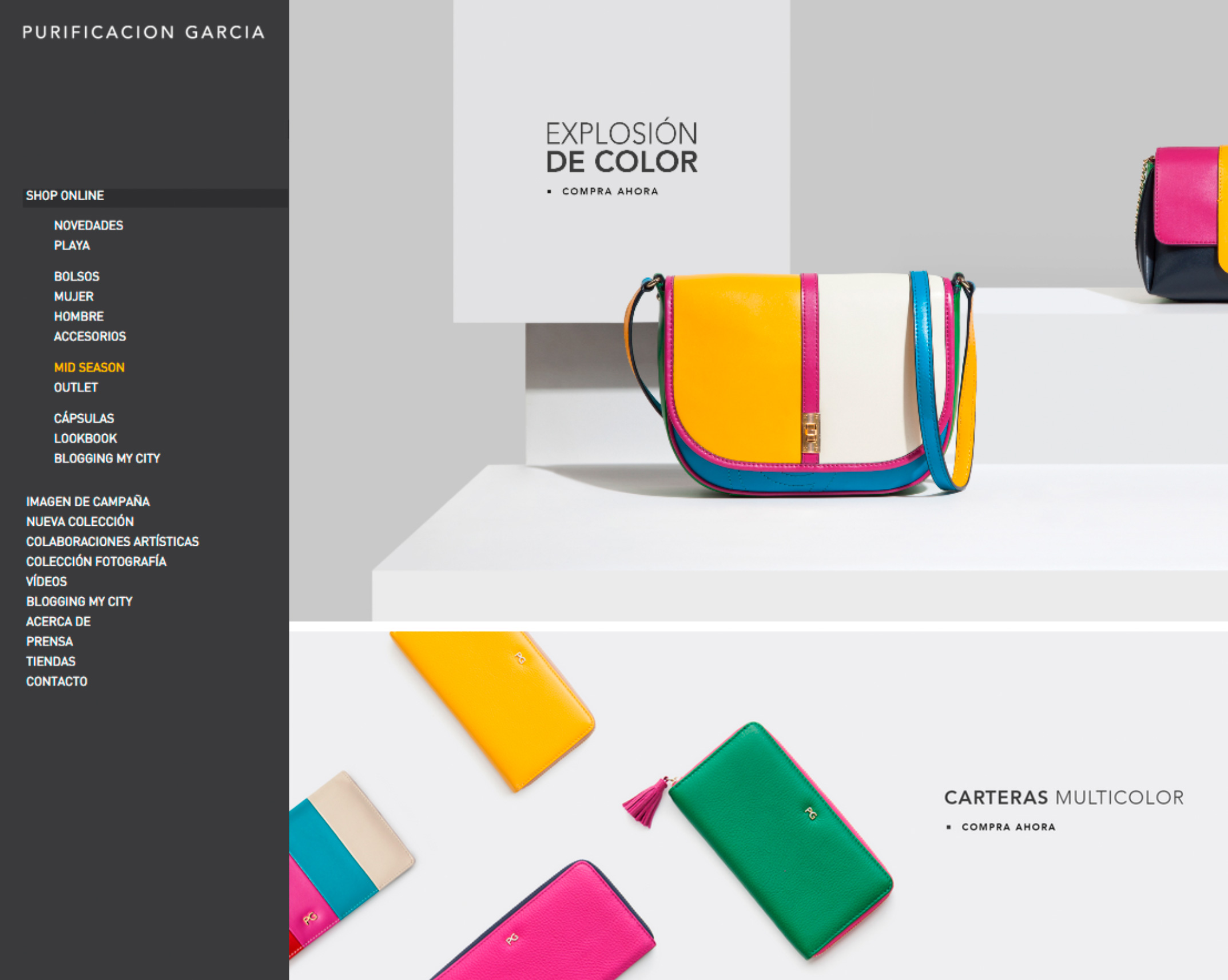
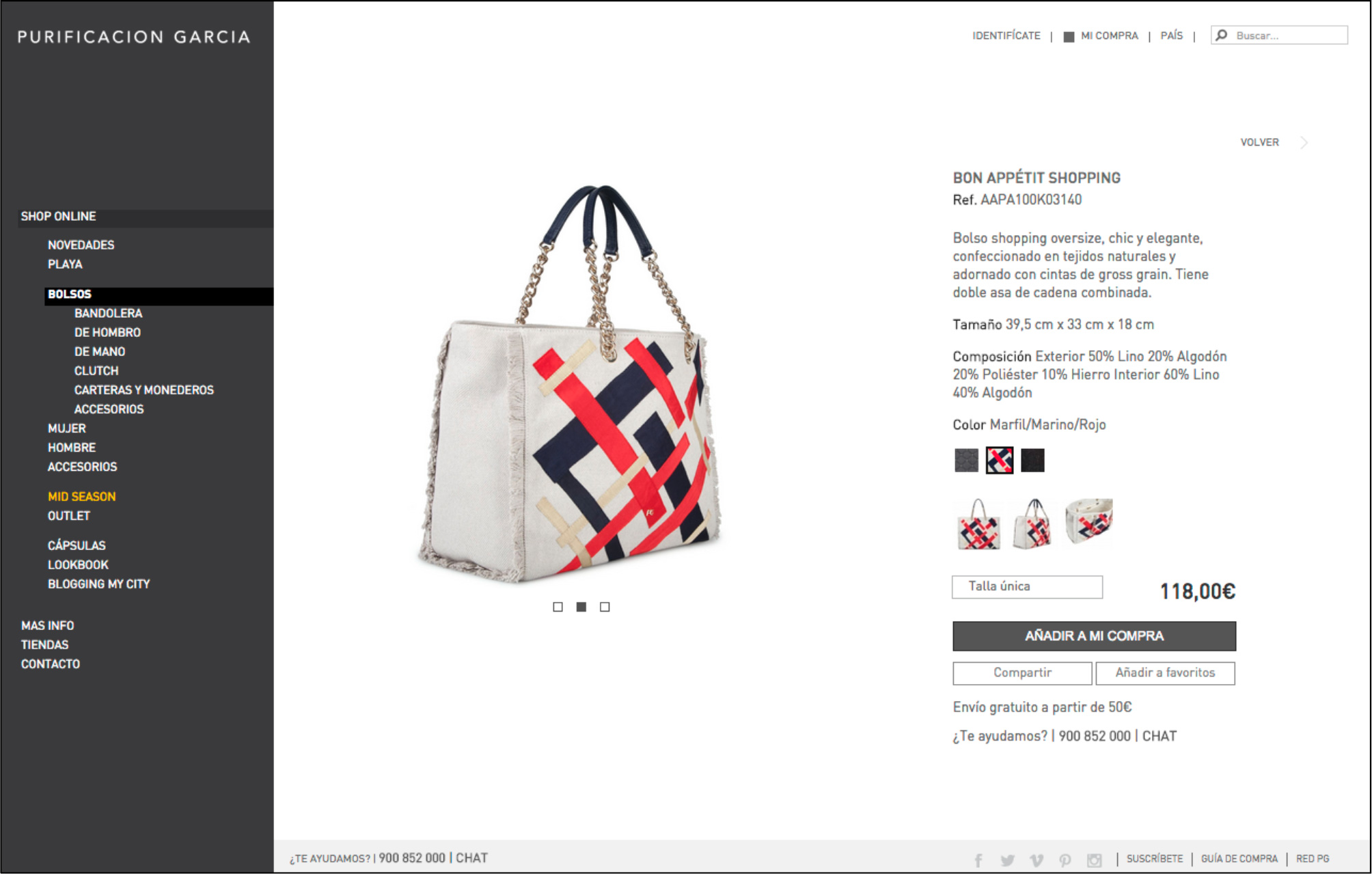
In 2012 we received in my studio the order to design and develop the ecommerce of Purificación García, owned by Sociedad Textil Lonia, also the owner of CH Carolina Herrera, with a presence in over 20 countries in more than 350 points of sale, specializing in luxury accessories and women’s and men’s clothing.
The project was complex and we developed it in Magento. We spent some time working in the headquarters office of the company to be in direct contact with their IT department, photographer, product team, etc. It was very interesting to be able to observe the process of how they manufacture their spectacular bags.
In addition to designing the website, for the launch, I directed an animation and motion graphics video around the figure of the cube, which is the geometric figure with which the brand is identified.
In the design of the web application, we sought to prioritize cleanliness and ease of use, eliminating all possible noise and any superfluous graphic elements.
After so many years, the website still retains the same essence of the minimalist design with which we launched.


In 2017 I started collaborating with Apiece Apart to improve the UX and UI of their ecommerce website.
In addition to their fabulous women’s apparel, their content strategy is great, with interviews of very interesting women who are photographed wearing the brand’s apparel. The articles are very visual with full-screen photography and videos. Over the photographs, on the right side, the products worn by the improvised models appear discreetly, and it is possible to add them to the shopping cart from this context that mixes content and ecommerce in a very elegant way.


In 2020, in collaboration with the great team of HD MADE, I designed the UI/UX of Ouragami, a brand of accessories in Los Angeles that has developed a fabric with a breathable technology that repels microbes and dirt, being ideal for the manufacture of masks but also other products such as hats or aprons.
I designed a simple but very visual responsive website with a focus on good conversion, product pages with a good amount of content, and fast loading. They are having great success with their products. Also, every purchase helps grant a wish for a child fighting cancer so everything is great.
In addition to the website, I was asked to make a 3D video explaining the technology behind their products and I designed it using Cinema 4D, X-Particles, Arnold Renderer, After Effects, and Davinci Resolve.
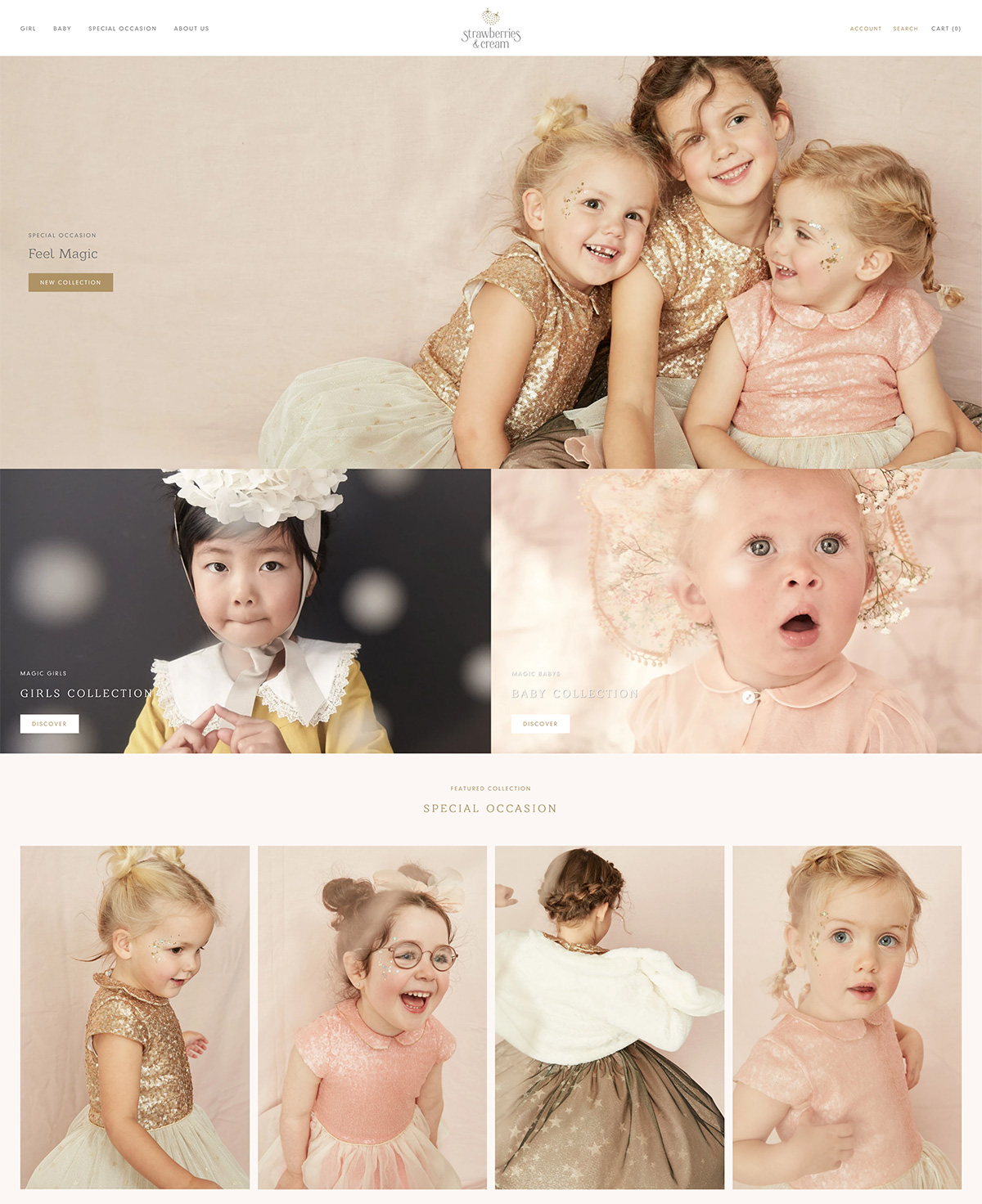
Strawberries & Cream create hand-made clothes in London, so each garment is a small work of craftsmanship. They have been very brave to launch it in the middle of the Covid 19 crisis.
For this Shopify project, I worked side by side with the founder to get it off the ground in the last quarter of 2020. It was very intense and interesting for me because I was in charge of all the technical and configuration part of the website but also of modifying the theme in Liquid, retouching photographs, creating product files, preparing images for social media, editing video, and a long etcetera. A startup project that I am sure will work very well and that is already receiving the attention of important players in the luxury fashion sector.
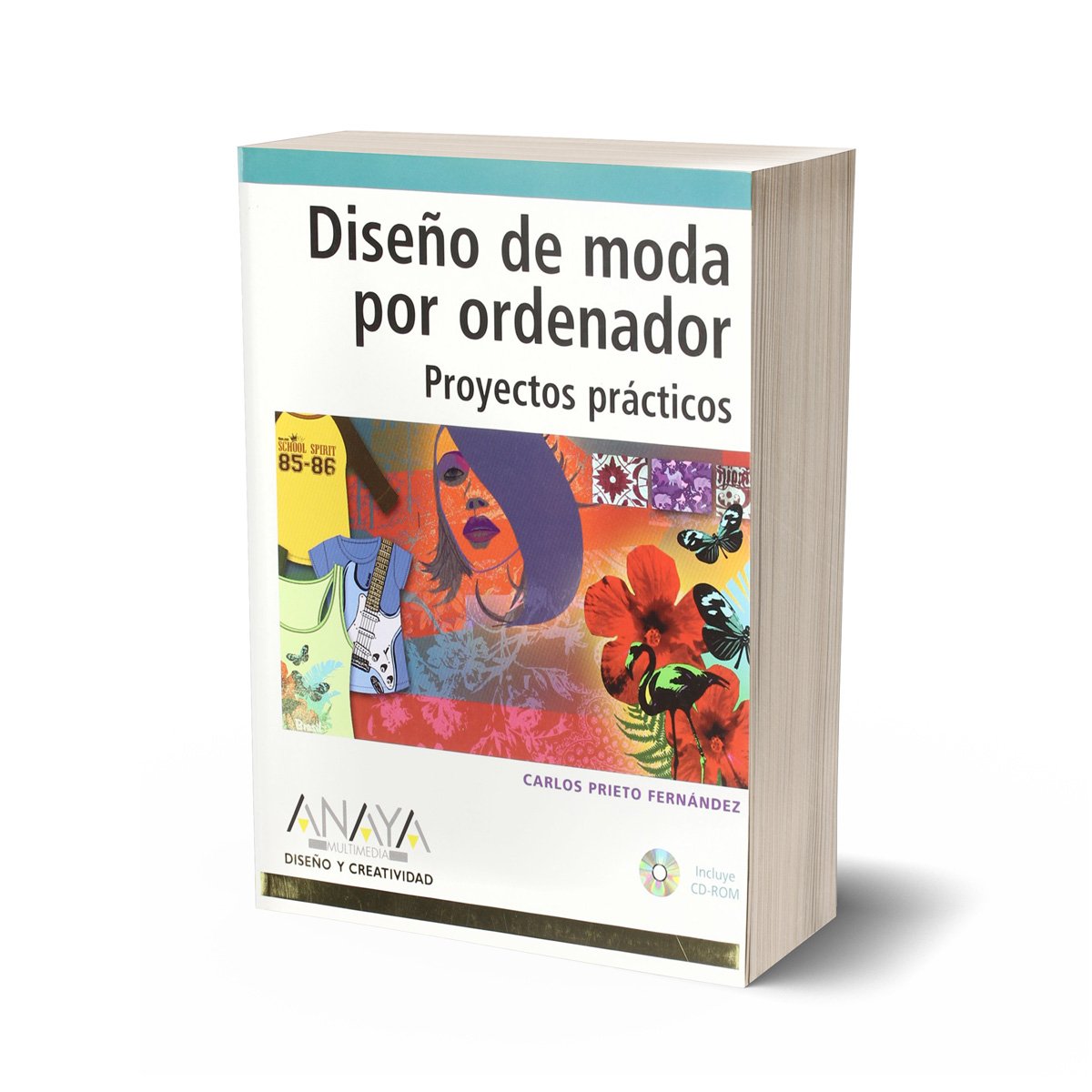
In 2005 I published through Anaya Multimedia, a large Spanish publishing house specialized in technical books, a book with graphic design tutorials oriented to the fashion industry. The book was very visual with many tutorials and screenshots of Photoshop and Corel Draw (at the time Corel was the standard software for vector design in this industry).
The title was “Diseño de Moda por Ordenador – Proyectos Prácticos” (“Computer aided fashion design – practical projects”).
10,000 copies were sold. Even though I had to do all the book texts, layout and corrections, the only thing they didn’t let me do was the cover and I never liked it.
I have done many other projects related to fashion but I think that with these you can get an idea of my work in this industry.